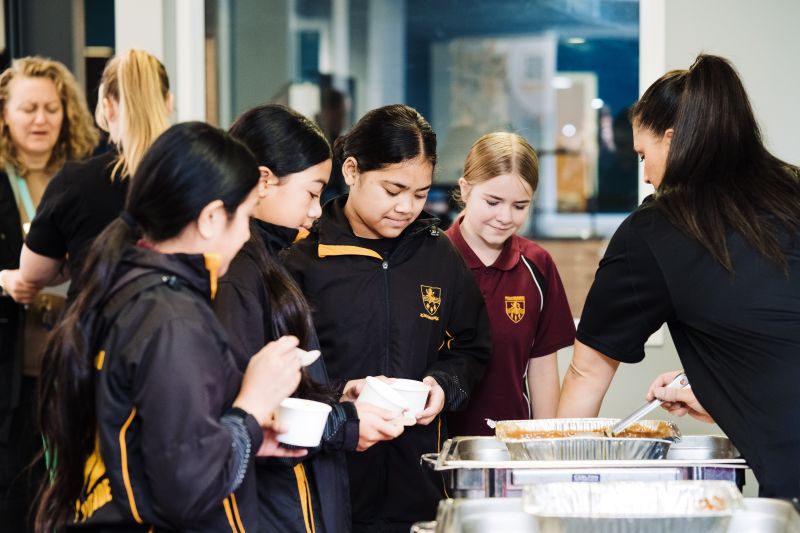
Image supplied by Libelle
<h4>A comprehensive study into the diets of Aotearoa New Zealand pre-schoolers found that most ākonga are not eating enough fruit and vegetables, and too many have diets that are high in sugar, salt, and saturated fat.</h4>
<p><a href="https://www.schoolnews.co.nz/latest-print-issue/" target="_blank" rel="noopener"><strong>Read the latest print edition of <em>School News</em> HERE</strong></a></p>
<p>The study, led by Teresa Gontijo de Castro, Clare Wall, and Sarah Gerritsen from the University of Auckland’s Faculty of Medical and Health Sciences, used information collected from thousands of children in the Growing Up in New Zealand longitudinal study of child development, when they were two and four years of age.</p>
<p>“Nutrition is critically important for healthy development, growth and immunity both in the preschool years, but also as children continue to grow and develop. Pre-school nutrition is particularly important as it is a time where long-term food preferences and eating habits are formed that persist throughout a person’s life which can influence health outcomes,” Professor Wall said. </p>
<h4><strong>Learning to eat well</strong></h4>
<p>Much of the work to encourage healthy eating will inevitably be done at home. These messages, though, need to be reinforced at school to have a lasting impact. There are many activities to facilitate this, across several curriculum areas.</p>
<p>A simple starting point to help students identify a range of different fruits and vegetables is a fruit and veg guessing bag. Place fresh or toy fruits and vegetables in a bag or pillow slip. Ask students to feel and smell the bag to try and work out what food items are inside.</p>
<p>Problem solving skills can be developed with an ‘odd one out’ game. Write four words, three of which are fruits and vegetables, and one which is not, for example, pineapple, potato, hat, tomato. This can help students build literacy skills, and identify food and non-food words. To increase the challenge, use three foods which are from the same food group, and one which is not, for example broccoli, apple, celery, milk.</p>
<p>Twenty questions can help students learn to describe food, and form relevant questions to identify different food. A celebrity heads style game can be created by sticking different foods to students’ heads and having them ask questions to find out what they are.</p>
<p>A letter of the week activity involving food can help build literacy skills and vocabulary. Choose a letter, and then spend the week identifying different foods that start with that letter. You can record these on a whiteboard or large sheet of paper. Students could also be tasked with drawing the foods, or cutting out pictures from supermarket catalogues. Focus the activity around the five food groups, and organise foods into their categories.</p>
<figure id="attachment_31165" aria-describedby="caption-attachment-31165" style="width: 522px" class="wp-caption aligncenter"><img class=" wp-image-31165" src="https://www.schoolnews.co.nz/wp-content/uploads/2024/07/SN65-FB-Healthy-choices-for-school-canteens-and-tuckshops-Libelle-2.jpg" alt="healthy school lunch" width="522" height="348" /><figcaption id="caption-attachment-31165" class="wp-caption-text">Image supplied by Libelle</figcaption></figure>
<h4><strong>Healthy choices at school</strong></h4>
<p>Schools can support students in making healthy food choices by providing nutritious options at school canteens and tuckshops. Offering food which is nutrient dense, low sugar and low fat will help ensure students remain fuelled and focussed throughout the school day.</p>
<p>Zoe Fisher from <a href="https://www.libelle.co.nz/" target="_blank" rel="noopener">Libelle</a> said the school environment during lunch times plays a crucial role in a student&#8217;s overall well-being and development.</p>
<p>“The school environment can influence food choices and eating habits. A healthy and balanced lunch is essential for students&#8217; physical and cognitive development. Studies have shown that a well-nourished student is more likely to perform better academically and have improved concentration and energy levels.</p>
<p>“Tuckshop menus should provide a balanced, nutritional selection incorporating the main food groups to help students make informed decisions about good, better, or best choices,” Mrs Fisher said.</p>
<p>“Lunch times provide students with opportunities to interact with their peers in a more relaxed setting, fostering social skills and relationships. We love watching students engage over their lunches, and have enjoyed listening to the change in conversation while students wait in line at our canteens to a more nutrition focussed approach. These positive social interactions during lunch can contribute to a sense of belonging and community within the school.”</p>
<p>Mrs Fisher said lunchtimes offer a chance for schools to promote inclusivity and celebrate diversity by encouraging students to interact with peers from different backgrounds. “Lunch providers can provide workshops in schools, seeking student feedback but also providing insights into healthy eating, nutritional benefits and fostering great ideas to implement into their tuckshops.”</p>

EXCLUSIVE: Teachers used to be paid two to three times more than minimum wage workers,…
After an “overwhelming” vote to reject the latest Government offer, secondary school teachers will begin…
Second-language learning should be compulsory, says a new report from a forum bringing together academics,…
A new entitlement aimed to improve access to learning support coordinators for schools with students…
Educators have raised questions about the Ministry of Education’s new secondary school subjects, set to…
Professional learning and development (PLD) for teachers needs to be higher impact for teachers and…
This website uses cookies.